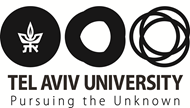Green Building Glossary
A Green Standard is a standard attesting to the fact that the product or service it is awarded is of lesser damage to the environment in comparison with other products or services of the same category available in the market. In Israel, the green standard is awarded by the Israel Standards Institution in cooperation with the Ministry for Environmental Protection. For a product to receive a green standard, it must comply with all requirements listed in the relevant product specification. Being awarded a green standard provides the product with recognition for its environmental benefits and assists in extending market demand rates. Meeting the green specifications and being awarded a green standard is not an obligation and is done on a voluntary basis.
The major criteria according to which products are scrutinized include: improved efficiency in using energy sources; the extent of recycled materials usage; the recyclability of the product at the end of its use; a production process which does not pollute land, water or air; whether the products reduces the use of hazardous substances, etc.
LCA (Life Cycle Assessment)
The aim of the LCA process is a deeper understanding of the various environmental impacts of each of the stages of a product’s life. The product’s lifecycle comprises consecutive stages which are connected in the production system of each product, process or service, and they begin in the stage of producing the raw materials, through the stage of production and through to the stage of end of use and becoming waste. The LCA process enables the comparison between the different environmental impacts of each stage while defining the severity level of each of the impacts.
Analysis of the data assists organizations, companies, and policy makers to determine the general and environmental policies with regard to the production of any particular product, selecting means to improve the various operation processes and in the provision of tools needed to make the right decisions aiming to minimize negative environmental impacts of the product.
The LCA process enables comparison between environmental impacts of different products from the same category or sector in order to identify the products causing the least harm. The LCA process examins numerous environmental aspects in the lifecycle of a product, including: energy consumption (amount of energy used and lost starting from the production of raw materials through their transport to the production site, during the product manufacturing in the factory through to the transportation of the final product to the building site); water consumption, contribution to global warming (greenhouse gas emission quantity), ozone layer depletion potential, product longevity, the possibility of reusing the product or depreciation, the recyclability of the product or depreciation of production, the degradability of the product or materials from the production process.
The LCA process is presently considered to be the most extensive analysis that can be executed for a product, and it therefore constitutes a strategic tool, enabling organizations, companies and policy makers to improve the environmental qualities of a product, based on thorough knowledge base and research, while implementing changes to production systems.
Nevertheless, the mere execution of the process is not an indication to the fact that actions were in fact implemented to minimize negative environmental impacts. The LCA process is usually integrated with EPD (Environmental Product Declaration), which serves as an accepted tool to present quantitative, comparable information on the environmental impacts of a product.
Health and Green Building
Green building has proven impacts on the health of the users of the building, the aim of green building, in addition to the concern for minimizing negative environmental impacts of buildings, is to the health of the buildings’ users. Green buildings have a positive impact on the health of the users, and contribute to the sense of welfare and content.
Improved living conditions in the interior spaces of the building have direct impact on the health and the sense of contentment and welfare, can be achieved by means of numerous actions:
- Reduced toxic emissions and radiation from building materials and finishing materials, including volatile organic compounds, radio-active radiation, electro-magnetic radiation and micro-magnetic radiation;
- Increased natural ventilation as it eliminated toxin-saturated air, carbon monoxide and heat emitted by human and instrument activity in the internal spaces, and the provision of fresh, clean, oxygen saturated air;
- Penetration of natural light to internal spaces, while preventing glare and direct blinding, combined with qualitative, energy-efficient artificial lighting;
- Prevention of noise penetration from factors within and external to the building;
- Providing user control on lighting and temperature adjustment.




